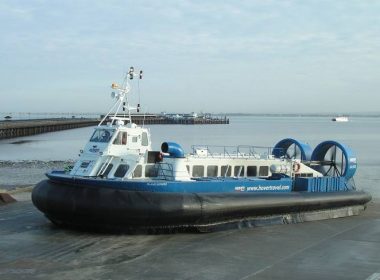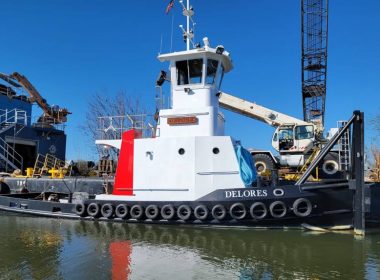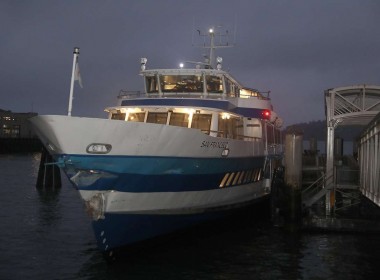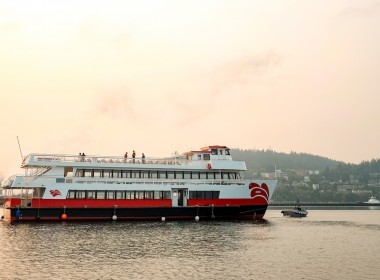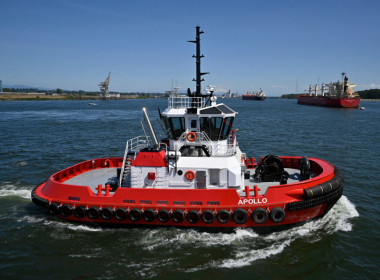VESSEL REVIEW | Dorado – US-Australian collaboration delivers fast commuter ferry for San Francisco Bay Area

The Water Emergency Transportation Authority (WETA) of San Francisco, California has begun operational sailings of a new aluminium catamaran ferry in the Bay Area.
Dorado is the first vessel in a series of four USCG Subchapter K ferries being built by Mavrik Marine of La Conner, Washington, to a design by One2Three Naval Architects of New South Wales, Australia. The new vessels will take over the routes once served by the WETA ferries Solano and Bay Breeze, which were recently retired. The addition of Dorado and its sisters are part of a continued effort by WETA to increase its ferry capacity as a way to alleviate traffic on the congested highway system in the Bay Area.
The vessel has a length of 130 feet (39.6 metres), a beam of 35 feet (10.6 metres), a crew complement of five, and capacity for 320 passengers plus bicycles. A service speed of 32 knots is possible thanks to its propulsion arrangement that consists of two Hamilton HT810 waterjets driven by MTU 12V4000M65R 2,575hp (1,920kW), US EPA Tier IV-compliant diesel engines via ZF 7600 gearboxes.
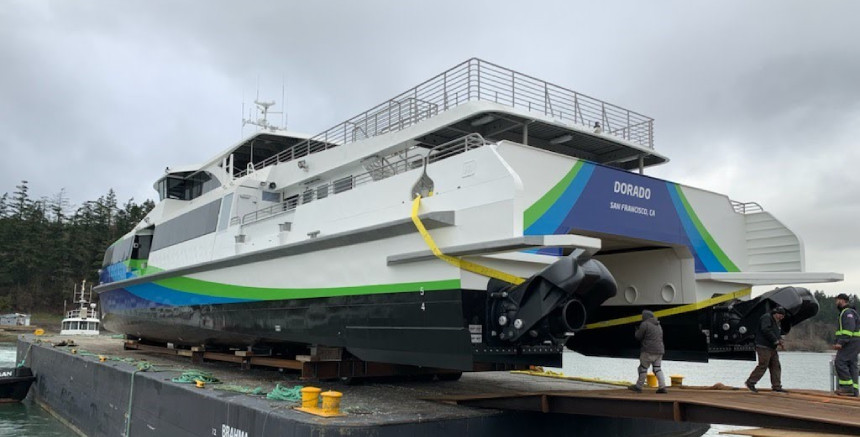
Hamilton also supplied the vessel’s AVX steering system, which provides the bridge crew with more precise control over the waterjets for manoeuvring in close quarters.
The propulsion arrangement delivers a maximum speed of 36 knots at full load, making the new ferry the fastest vessel in the current active WETA fleet.
The newbuild is notable for being the first WETA vessel that can safely berth at any of the 12 terminals operated by the San Francisco Bay Ferry system.
MTU supplied the ferry with its proprietary system that monitors essential systems including propulsion, onboard power generation, bilges, tanks, electrical systems and other general vessel systems. The information not only allows the system to continuously monitor the ship’s systems but also implement control. The system includes trending of data and remote monitoring to provide the owners with remote access to various data and alarms.
Power for the onboard electronics, which include Furuno and Cal Marine equipment, is drawn from a pair of John Deere 99kW generators.
Dorado and its sisters will be operated by WETA through its San Francisco Bay Ferry line.
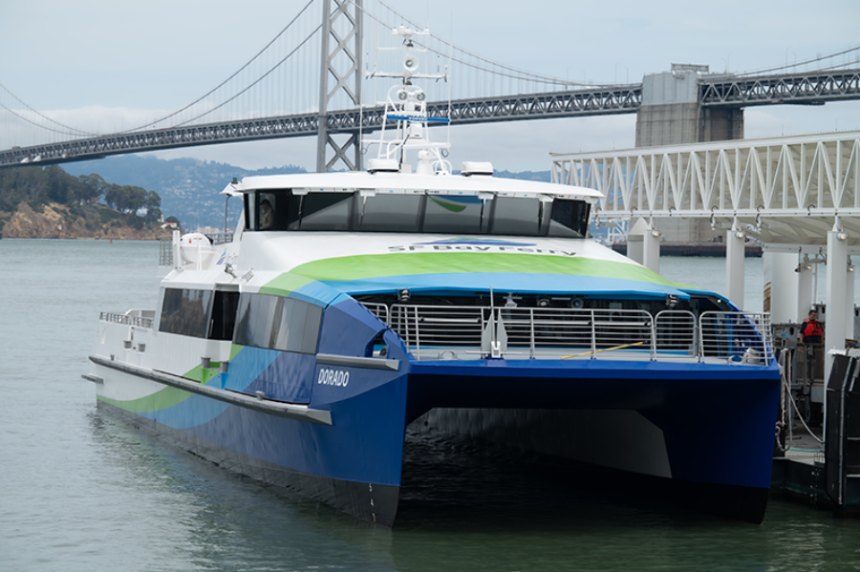
| Dorado | |
| SPECIFICATIONS | |
| Type of vessel: | Ferry |
| Flag: | USA |
| Owner: | Water Emergency Transportation Authority, California, USA |
| Operator: | San Francisco Bay Ferry, USA |
| Designer: | One2Three Naval Architects, Australia |
| Builder: | Mavrik Marine, USA |
| Hull construction material: | Aluminium |
| Superstructure construction material: | Aluminium |
| Deck construction material: | Aluminium |
| Length overall: | 130 feet (39.6 metres) |
| Beam: | 35 feet (10.6 metres) |
| Main engines: | 2 x MTU 12V4000M65R, each 2,575 hp (1,920 kW) |
| Gearboxes: | 2 x ZF 7600 |
| Propulsion: | 2 x HamiltonJet HT810 |
| Generators: | 2 x John Deere, each 99 kW |
| Steering system: | HamiltonJet AVX |
| Maximum speed: | 36 knots |
| Cruising speed: | 32 knots |
| Radar: | Furuno |
| Monitoring system: | MTU |
| Other electronics: | Cal Marine |
| Type of fuel: | Diesel |
| Crew: | 5 |
| Passengers: | 320 |
| Operational area: | San Francisco Bay, USA |



